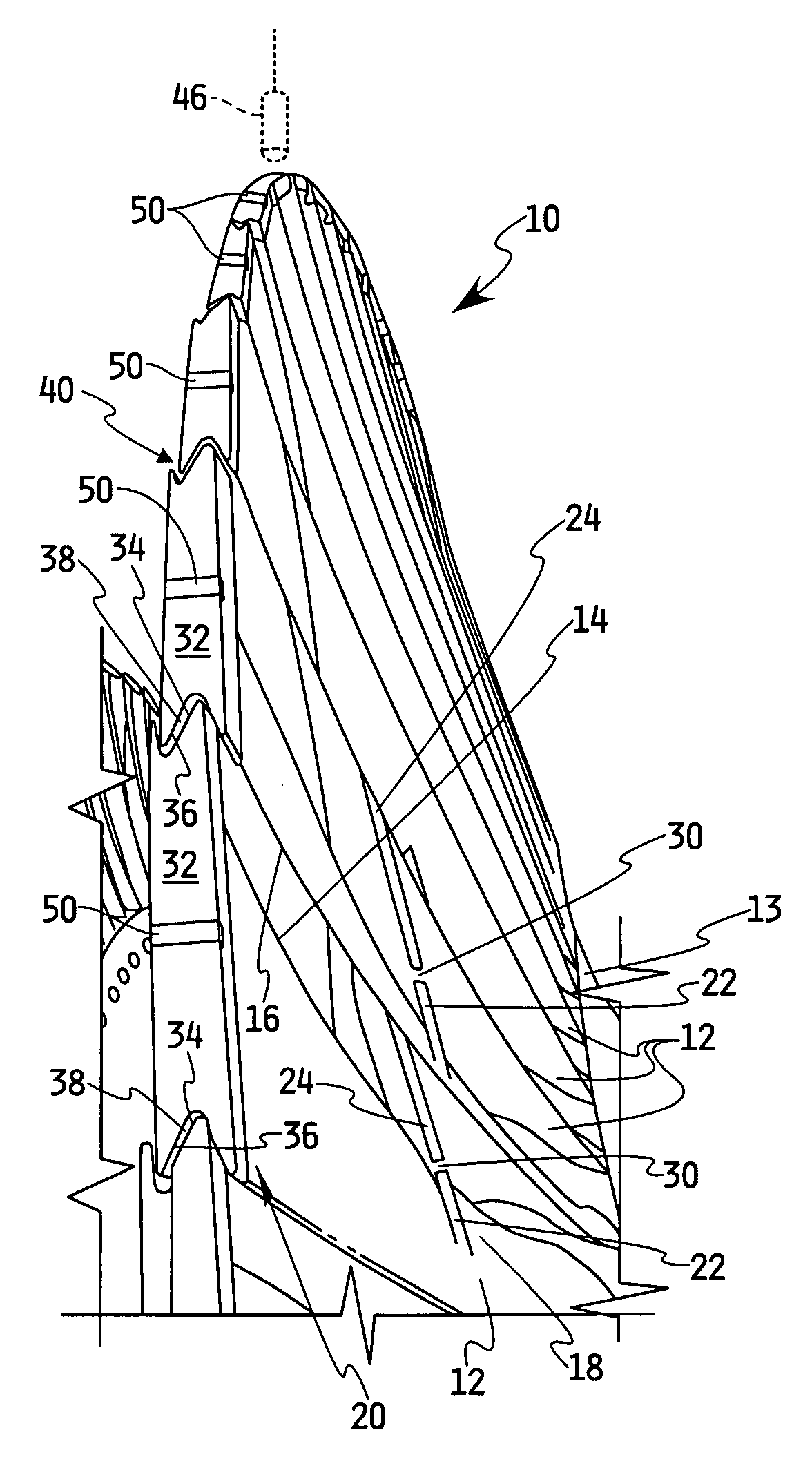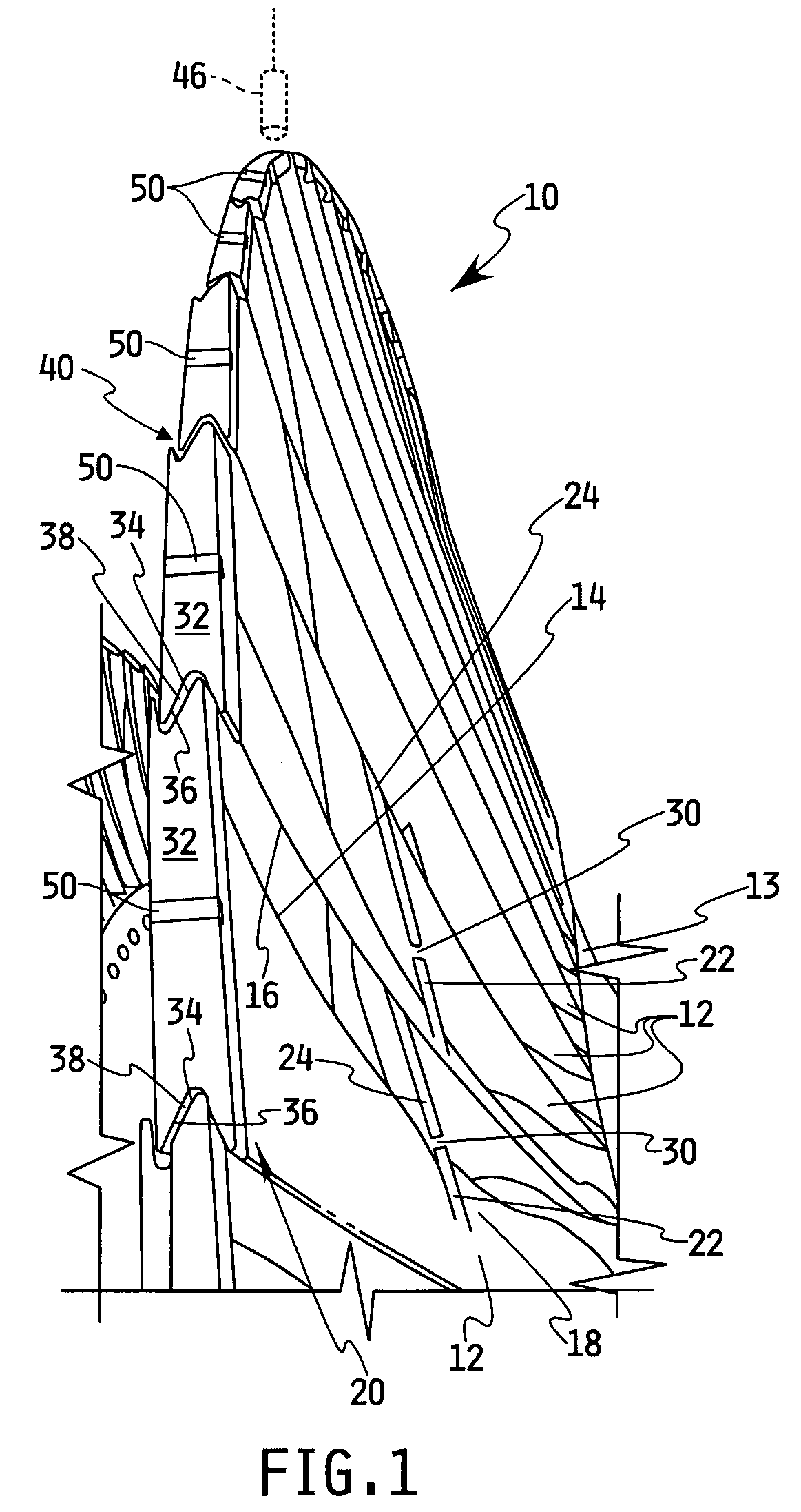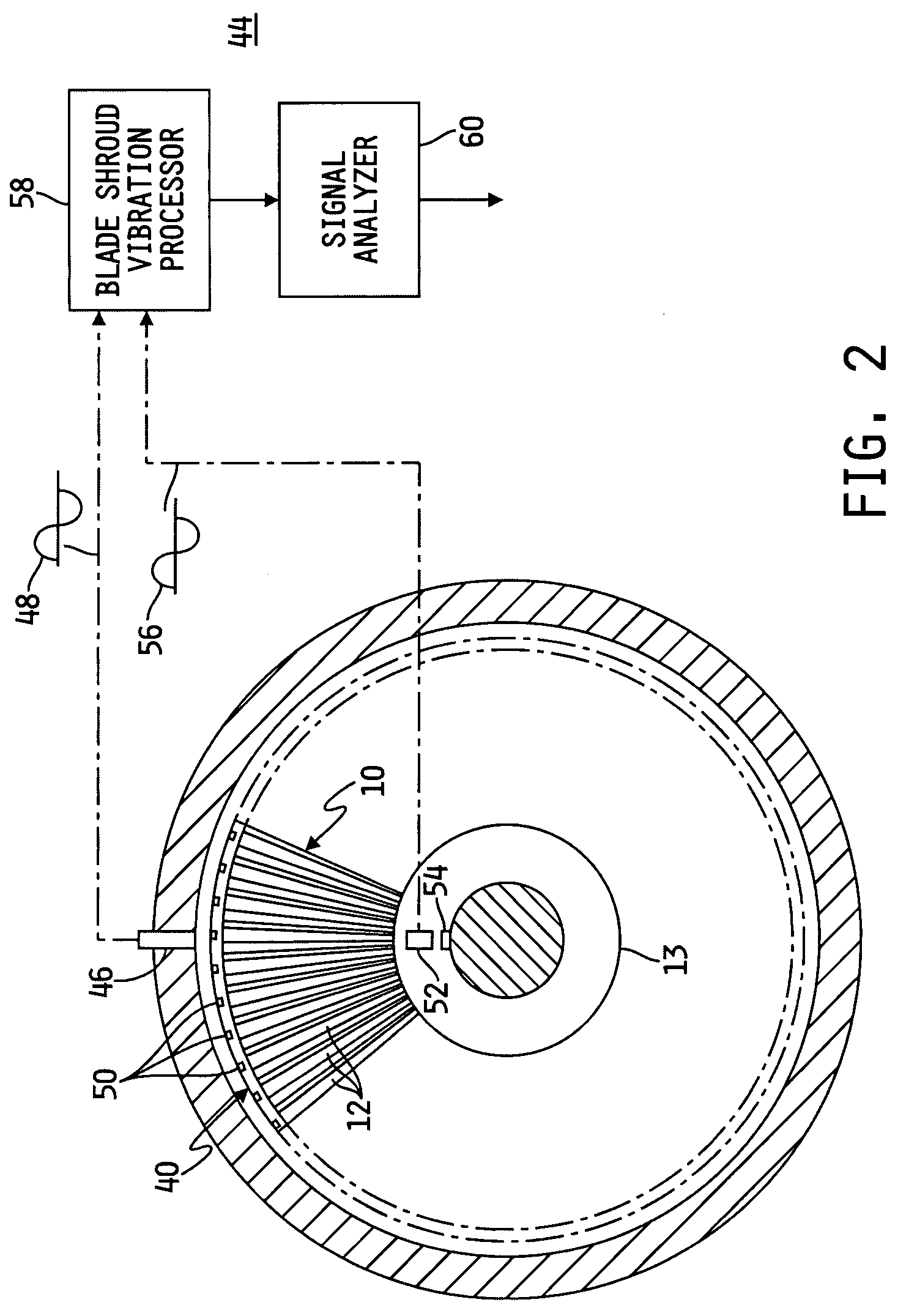Blade shroud vibration monitor
a vibration monitor and shroud technology, applied in the direction of machines/engines, instruments, static/dynamic balance measurement, etc., can solve the problems of blades being excited by non-synchronous forces, and affecting the operation of the machin
- Summary
- Abstract
- Description
- Claims
- Application Information
AI Technical Summary
Problems solved by technology
Method used
Image
Examples
example 1
[0049]Referring to FIGS. 4-6, a first comparison of an analysis provided by the BSVM system is shown relative to an analysis of the same data provided by the BVM system for a first event. The data is based on a test performed on a shrouded steam turbine blade row. Steel targets 50 were wedged into the outer surface of fifty-eight titanium shroud portions 32 corresponding to fifty-eight equally spaced blades 12, and a single magnetic reluctance probe was used to provide signals corresponding to the actual arrival time of the targets 50. The blade row was rotated at a speed of 3600 rpm, corresponding to a rotational frequency of 60 Hz.
[0050]FIG. 4 shows the BVM measured amplitude for each of the 58 targets (blades) based on the measured 6th BVM subharmonic. FIG. 5 shows a 16 line BVM spectra (average of all blades) with 1.875 Hz resolution for the first event, in which the 6th and 11th subharmonics appear responsive, i.e., indicate a peak shroud vibration wave. The spectra for the BVM...
example 2
[0052]Referring to FIGS. 7-8, a comparison of an analysis provided by the BSVM system is shown relative to an analysis of the same data provided by the BVM system for a second event, using the same setup as described for Example 1.
[0053]FIG. 7 shows a 16 line BVM spectra with 1.875 Hz resolution for the second event, in which the 6th subharmonic is shown as clearly appearing responsive. However, in the BSVM analysis of the same data, as shown in FIG. 8, it can be seen that both the 58th and 134th subharmonics are responsive which, in the BVM analysis, fold onto the 0 to 30 Hz spectral range, and which combine as a vector sum to appear as the 6th subharmonic. In addition, the BSVM analysis illustrated in FIG. 8 shows further spectral lines at subharmonics of 43 Hz, 73 Hz, 77 Hz, 103 Hz, 179 Hz, and 223 Hz, as noted along with the corresponding folded down BVM subharmonics that result from an analysis of the blade vibrations taken individually.
[0054]From the above description, it can ...
PUM
| Property | Measurement | Unit |
|---|---|---|
| fundamental frequency | aaaaa | aaaaa |
| frequency | aaaaa | aaaaa |
| frequency | aaaaa | aaaaa |
Abstract
Description
Claims
Application Information
 Login to View More
Login to View More - R&D
- Intellectual Property
- Life Sciences
- Materials
- Tech Scout
- Unparalleled Data Quality
- Higher Quality Content
- 60% Fewer Hallucinations
Browse by: Latest US Patents, China's latest patents, Technical Efficacy Thesaurus, Application Domain, Technology Topic, Popular Technical Reports.
© 2025 PatSnap. All rights reserved.Legal|Privacy policy|Modern Slavery Act Transparency Statement|Sitemap|About US| Contact US: help@patsnap.com



